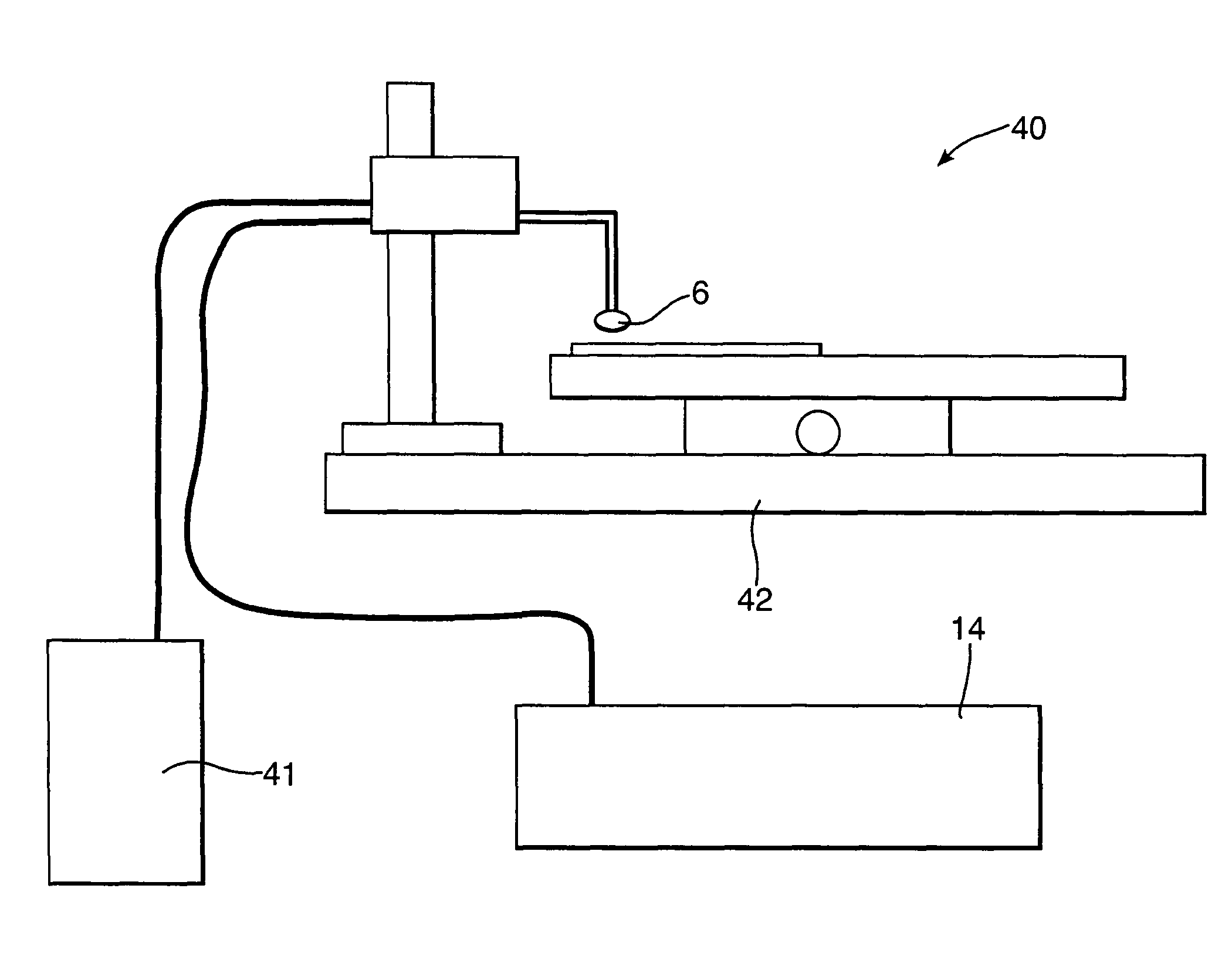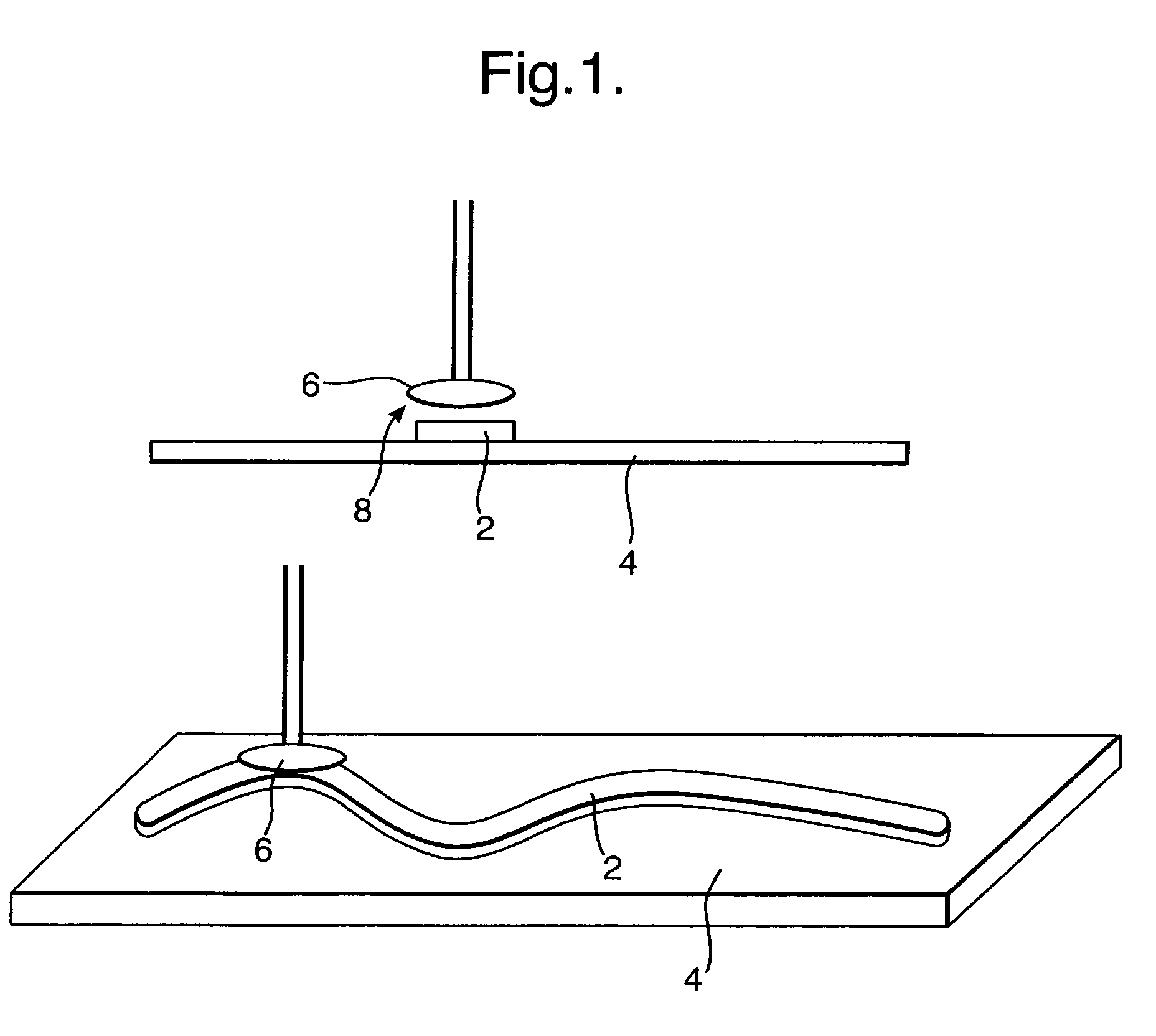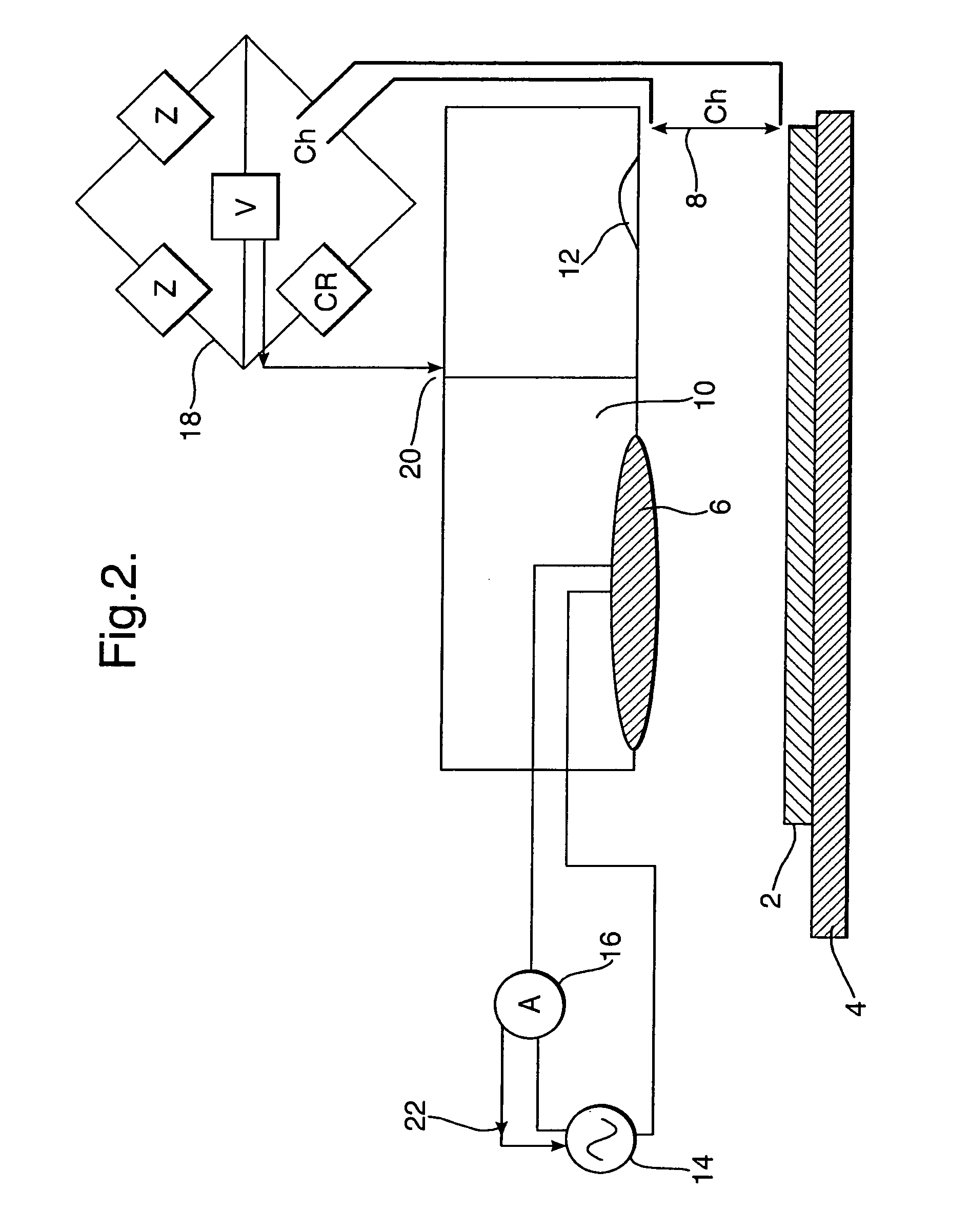Direct write and additive manufacturing processes
a technology of additive manufacturing and write process, which is applied in the field of direct write process and additive manufacturing process, can solve the problems of difficulty in determining the state of the ink being cured or when the curing has been completed, and achieve the effect of reducing the resistance of the ink and the rate of curing
- Summary
- Abstract
- Description
- Claims
- Application Information
AI Technical Summary
Benefits of technology
Problems solved by technology
Method used
Image
Examples
example
[0046]An nScrypt “Smart Pump” is specified to dispense lines down to 50 μm wide and onto conformal surfaces where the angle of the substrate is below 30°. The theoretical track resolution with a “micro pen” system is 100 μm using a 75 μm outer diameter tip, although the narrowest lines produced to date are approximately 230 μm wide using a 175 μm outer diameter tip.
[0047]To assist with the materials characterization and process optimization, an Intertronics DK118 Digital Dispenser is used, which is a bench top syringe system using a simple pressure regulator to provide material flow. The output pressure can be set from IPsi to 100 Psi in increments of 1 Psi and the barrel suck-back feature prevents low viscosity materials from dripping. An I / O port allows the dispenser to be interfaced with external devices. The resolution of this dispensing technique is limited by the size and tolerance of the nozzles available. The nozzles have a stainless steel barrel and it is the outer diameter...
PUM
| Property | Measurement | Unit |
|---|---|---|
| width | aaaaa | aaaaa |
| width | aaaaa | aaaaa |
| width | aaaaa | aaaaa |
Abstract
Description
Claims
Application Information
 Login to View More
Login to View More - R&D
- Intellectual Property
- Life Sciences
- Materials
- Tech Scout
- Unparalleled Data Quality
- Higher Quality Content
- 60% Fewer Hallucinations
Browse by: Latest US Patents, China's latest patents, Technical Efficacy Thesaurus, Application Domain, Technology Topic, Popular Technical Reports.
© 2025 PatSnap. All rights reserved.Legal|Privacy policy|Modern Slavery Act Transparency Statement|Sitemap|About US| Contact US: help@patsnap.com



